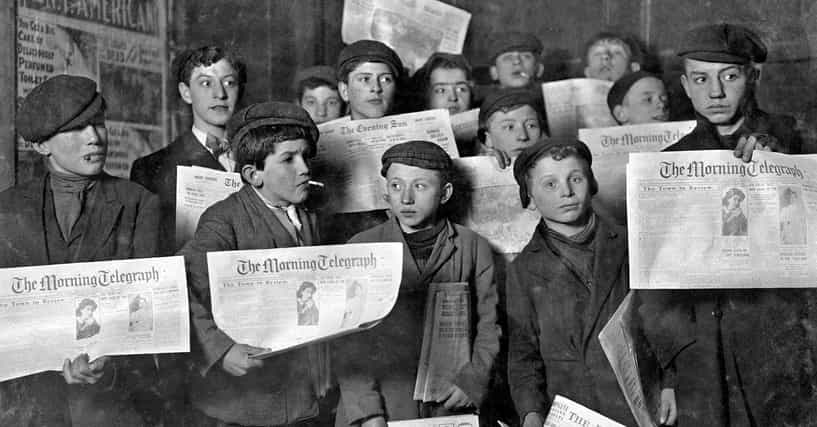We have all heard the brave stories of an army of child laborers going to war against huge businesses. Also, a Disney movie, Newsies, shows how two kids strategically took down two tycoons by outsmarting them.
This post features 13 such stories for you to read. Scroll down to have a look.

Publishing Tycoons Decided To Fleece The Newsies Increase Their Profits
 Newsboys on the New York streets had to buy bundles of papers wholesale to resell individually, hoping to make a profit. During the Spanish-American War in 1898, newspapers raised a bundle of papers to 60 cents, cutting into the newsboys’ profits.
Newsboys on the New York streets had to buy bundles of papers wholesale to resell individually, hoping to make a profit. During the Spanish-American War in 1898, newspapers raised a bundle of papers to 60 cents, cutting into the newsboys’ profits.
After the war, all the papers except William Randolph Hearst’s Journal and Joseph Pulitzer’s World lowered the price to 50 cents a bundle. By the summer of 1899, newsboys were barely subsisting. On average, they earned only 26 cents a day working long hours. So the newsboys decided to strike to protest the costly papers.
The Boys Formed A Union And Timed Their Strike To Avoid Cops

On July 18, 1899, Long Island newsies learned a deliveryman for the Journal was shorting their bundles, cheating them out of wages. Consequently, they tipped the man’s wagon and stole his papers. This action triggered a larger strike, as the newsboys demanded a rollback to 1898 prices. The next day, the Manhattan newsboys created a union and announced they were on strike.
The newsboys chose the perfect moment to strike; the Brooklyn streetcar drivers were also on strike that week. Thus, according to an 11-year-old newsboy, “De cops is all busy!”
The Newsies Hit The Tycoons Where It Hurt: Their Pocketbooks

The July 1899 strike significantly disrupted New York’s newspaper business. The editor of the New York World wrote to Joseph Pulitzer, warning “the newsboys’ strike has grown into a menacing affair.” He also reported, “Practically all the boys in New York and adjacent towns have quit selling… The advertisers have abandoned the papers… It is a very extraordinary demonstration.”
The newspapers depended on underpaid child laborers to distribute their papers. The newspaper tycoons immediately felt the results – at the World, the paper slashed their press run from 360,000 papers a day to 125,000 a day. The stunned editor said, “It is remarkable the success these boys have had.”
The Strikers, Led By Kid Blink, Declared 10 Cents Meant More To Them Than To Millionaires

Led by charismatic newsie Kid Blink, the newsboys met at Irving Hall during the strike to win over public support. At least 5,000 newsies gathered to attack the tycoons. During a rousing speech, Kid Blink targeted the news tycoons directly:
“Ain’t that 10 cents worth as much to us as it is to Hearst and Pulitzer, who are millionaires? Well, I guess it is. If they can’t spare it, how can we? I’m trying to figure how 10 cents on 100 papers can mean more to a millionaire than it does to newsboys, an’ I can’t see it!”
The Children Strategically Targeted Newspaper Distribution Points

The newsboys’ strike stands out since children organized it. Despite their young age, the newsies were well-coordinated. They managed to cut circulation of the targeted papers by nearly two-thirds, with a group of 5,000 newsboys meeting in Irving Hall to state their demands. Most ranged in age from 7 to 12 years old.
The strikers targeted distribution points for the newspapers, meeting on Newspaper Row on July 22, 1899, to clash with wagons delivering papers. Boys threw fruit at deliverymen and destroyed papers.
Newsboys Had To Sell Late Into The Night To Make A Profit

The newsboys weren’t employees of the newspapers. Instead, they had to buy a bundle of papers wholesale from a deliveryman, then sell the papers to profit. Before 1898, New York papers charged 50 cents for a bundle of 100 papers, which the newsboys sold for one cent per paper. However, if the newsies failed to sell the papers, they lost money. Newsboys worked long into the night to turn a profit. Photographer Lewis Hine snapped a picture of a newsie selling papers at 1 am.
A ‘Media War’ Left The Newsies Scraping For Wages

The outbreak of the Spanish-American War in 1898 meant skyrocketing sales for US newspaper tycoons like William Randolph Hearst and Joseph Pulitzer, especially as the papers sensationalized or sometimes manufactured events to sell more copies. Known as “yellow journalism,” the media war in the 1890s ended up hurting newsies when the Evening Sun and Evening World raised the price for a bundle of 100 newspapers from 50 cents to 60 cents.
When newspaper sales returned to normal levels after the war, the Journal and World continued charging the higher fee, meaning newsies often had to sell papers well into the evening to make a living.
The Newsboys Used Targeted Violence To Get Their Demands

The striking newsboys attacked newspaper wagons, throwing fruit and stealing papers to prevent scabs from selling them. In Long Island City, newsies tipped over a delivery wagon and stole its papers. But the striking boys did set standards. While they tossed buckets of water on newsstand owners who refused to support the strike, leader Kid Blink promised they would refrain from dousing women. “A feller doesn’t soak a lady,” Kid Blink told his followers.
The Striking Newsboys Addressed The Public Directly
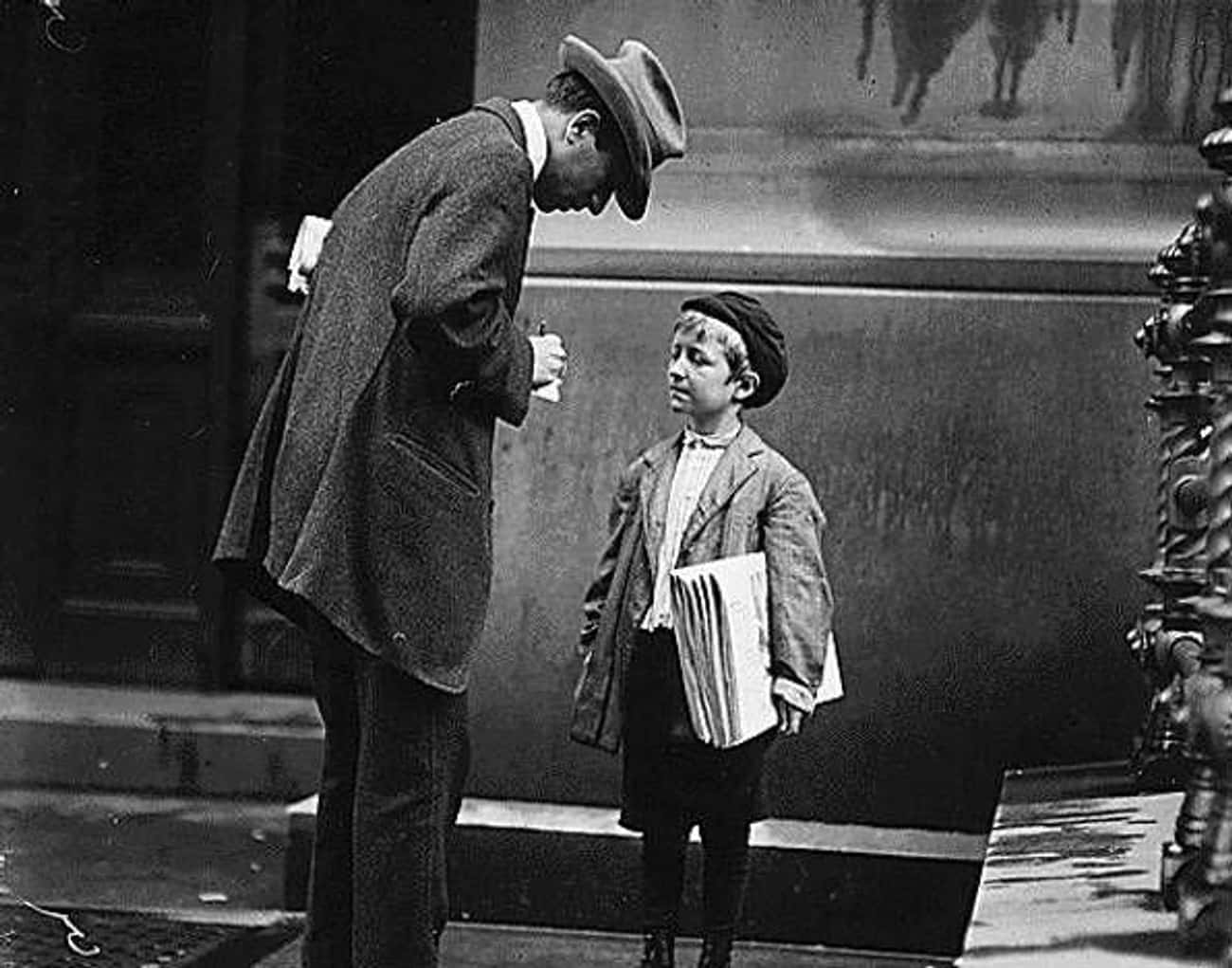
The newsboys appealed to the public directly, declaring themselves the Newsboys’ Union and passing a resolution, which read:
“Please don’t buy the World or Journal, because we refuse to sell these papers until some satisfactory terms can be reached. The World and the Journal demand arbitration for the striking railroad men, but why don’t they arbitrate with the newsboys? If you have any sympathy with us, help us to boycott these papers by not reading them. Take out your advertisements, as no one sells these papers; no one will be able to see them.”
The striking boys advised the public to buy other papers to “give us a chance to make a living,” including the Evening Sun, Telegram, and Daily News.
Hearst And Pulitzer Were The Most Successful Media Moguls In The Country

William Randolph Hearst and Joseph Pulitzer were two of the wealthiest media moguls in the 20th century. The two battled each other for the top spot, with Hearst pulling ahead in 1897 when his two New York papers topped 1.5 million in circulation. Both tycoons relied on the newsboys to distribute their papers.
The strike proved the newsboys were indispensable. Without them, the papers couldn’t make money, especially since home delivery had yet to exist, and there were only a few newsstands compared to many newsreaders. Once the tycoons realized the newsboys’ power, they both agreed to negotiate.
The Newsboys Negotiated A Victory
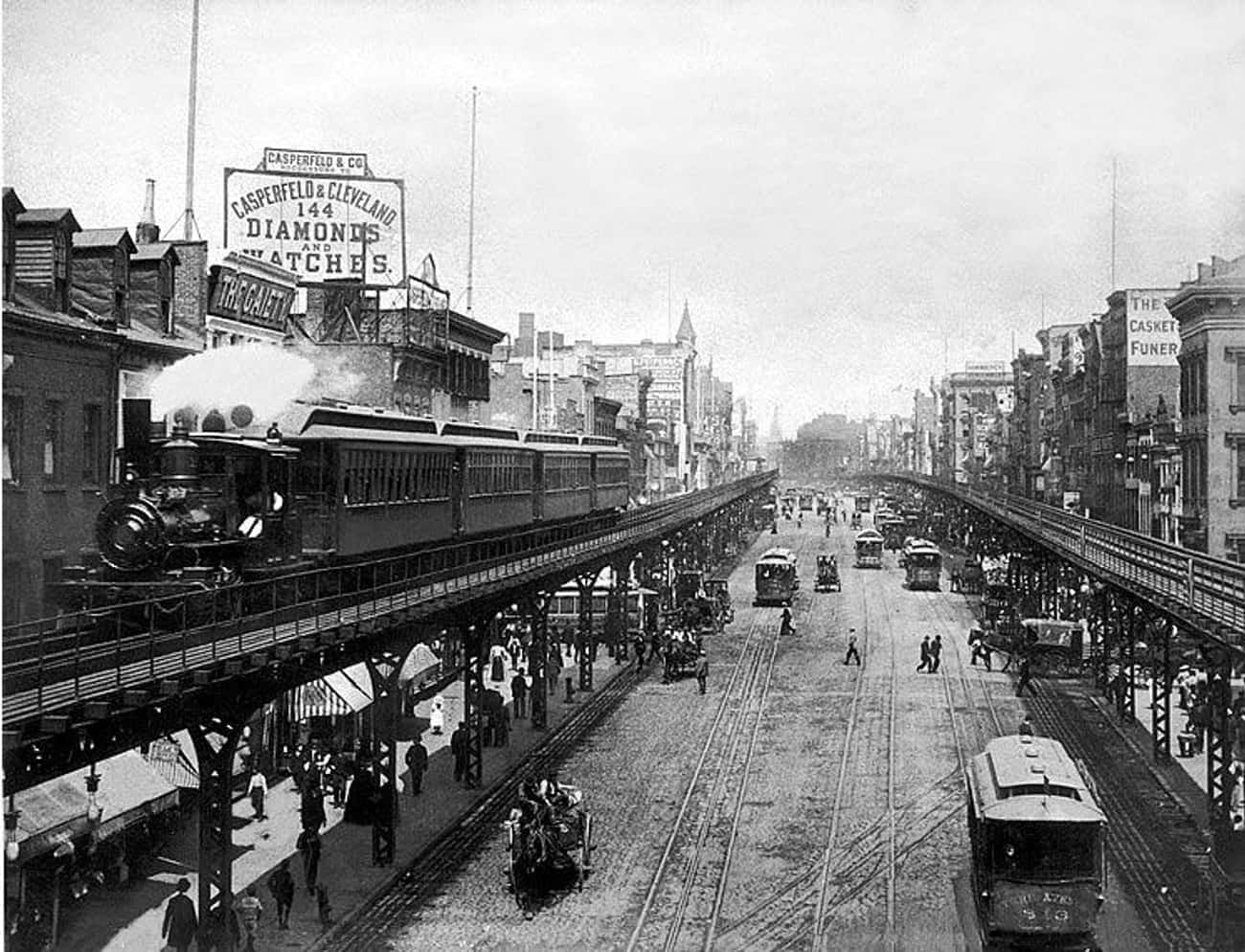
The newsboys’ strike of 1899 dragged on for the rest of July. In August, with their respective papers suffering from a massive drop in sales, William Randolph Hearst and Joseph Pulitzer agreed to negotiate with the boys. Initially, the newsies wanted a reduction in a bundle of 100 papers, which increased from 50 cents to 60 cents in 1898. But the negotiated victory turned out better than a price reduction.
The World and Journal agreed to a greater, unprecedented demand: the newsies could return unsold papers for a full refund. Instead of selling past midnight to make a profit, the boys could resell the papers back to the publishers, protecting themselves against a loss. The newsies agreed, and on August 2, 1899, they returned to selling papers.
Young Mush, Crutchie Morris, And Kid Blink Scored A Victory Against Two Tycoons
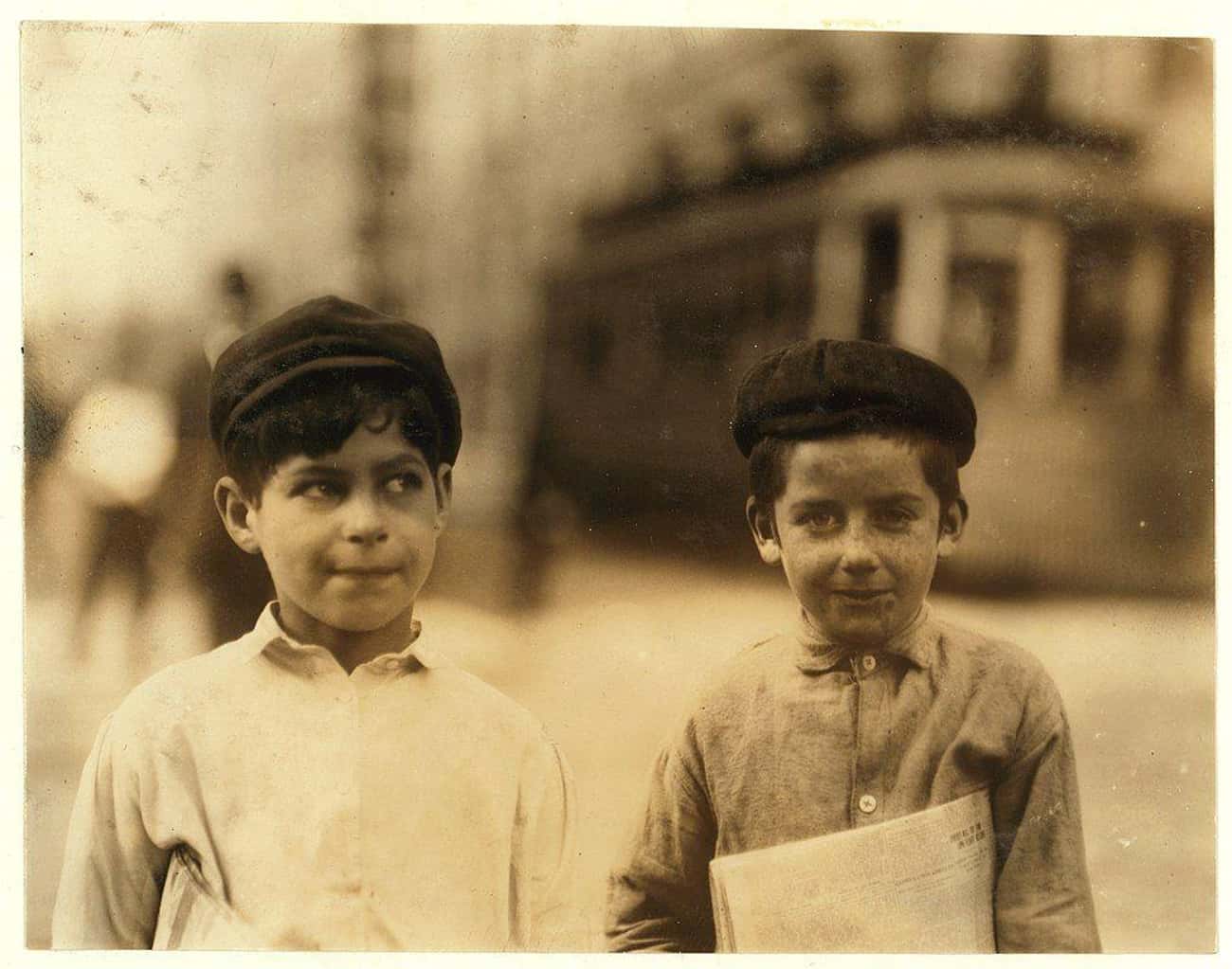
How did an army of urchins beat two of the richest tycoons in the country? How could kids with names like Young Mush, Crutchie Morris, Kid Blink, and Racetrack Higgins take on the system and win? The newsboys benefited from three factors. First, the larger Brooklyn streetcar strike distracted the police. Secondly, the boys targeted the weak point in the newspapers’ profits, which was distribution.
And finally, the boys understood the value of public relations. They encouraged supporters to buy rival papers – these dailies in turn published flattering stories about the strike. The newsboys vowed never to “soak a lady” and only resorted to targeted violence to decry the unjust ways of the press. They also appealed to the millions of customers whom they interacted with daily.
The Strike Brought Attention To Terrible Conditions For Child Workers
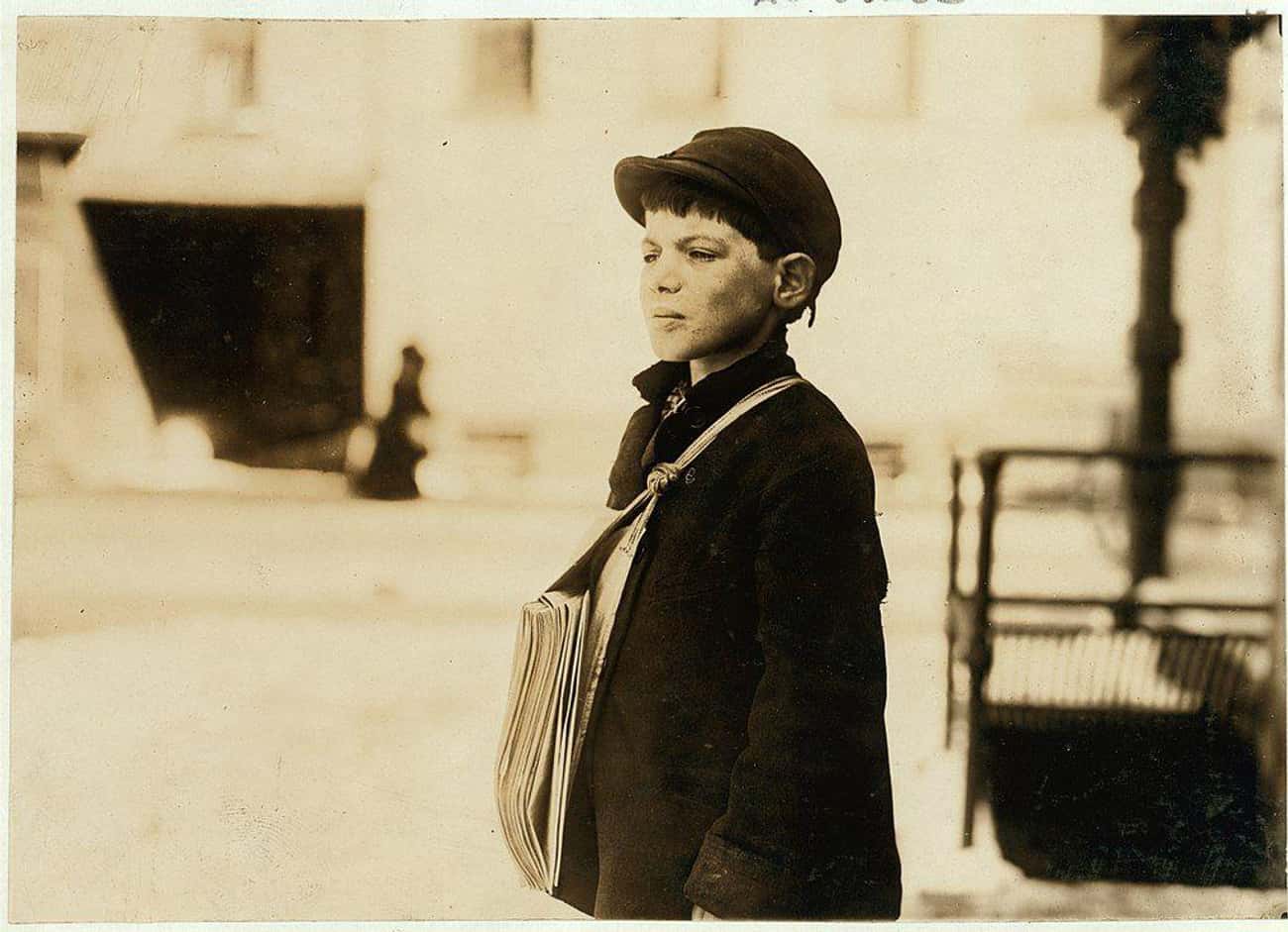
The newsboys didn’t merely win the war against Joseph Pulitzer and William Randolph Hearst; their strike brought attention to the plight of child workers as well. Many of the newsboys featured in articles about the strike were poor or homeless, and they often jumped trolley cars to cover more ground or stayed out late to sell papers.
Before the rise of child labor protections, children across the country worked in unsafe conditions to scrape together a few nickels and dimes. Less than a decade after the strike, photographer Lewis Hine took pictures of newsies and other young workers as part of the National Child Labor Committee’s effort to end child labor. Progressives pushed for restrictions on child labor, successfully raising the nation’s working-age during the Great Depression.


